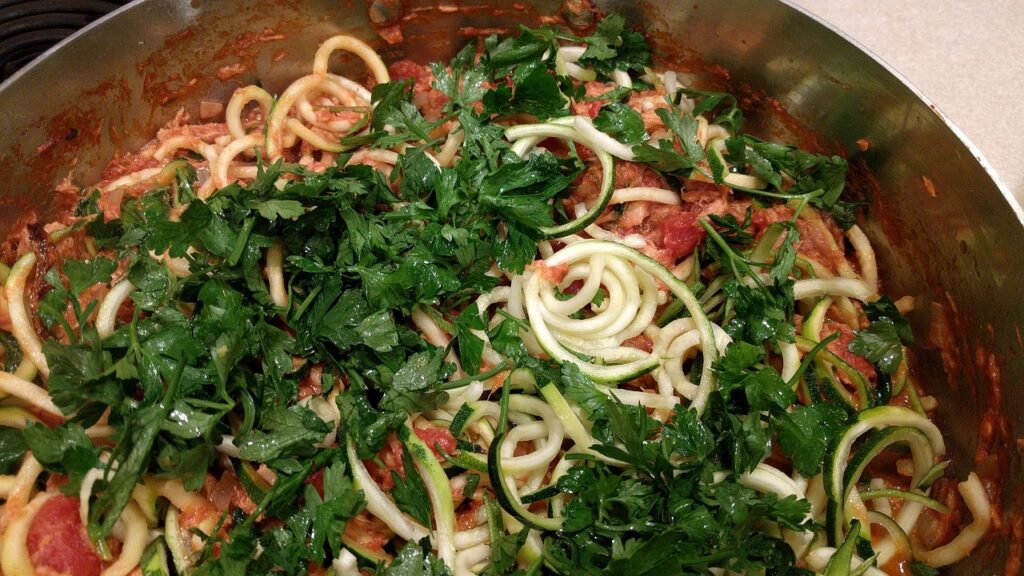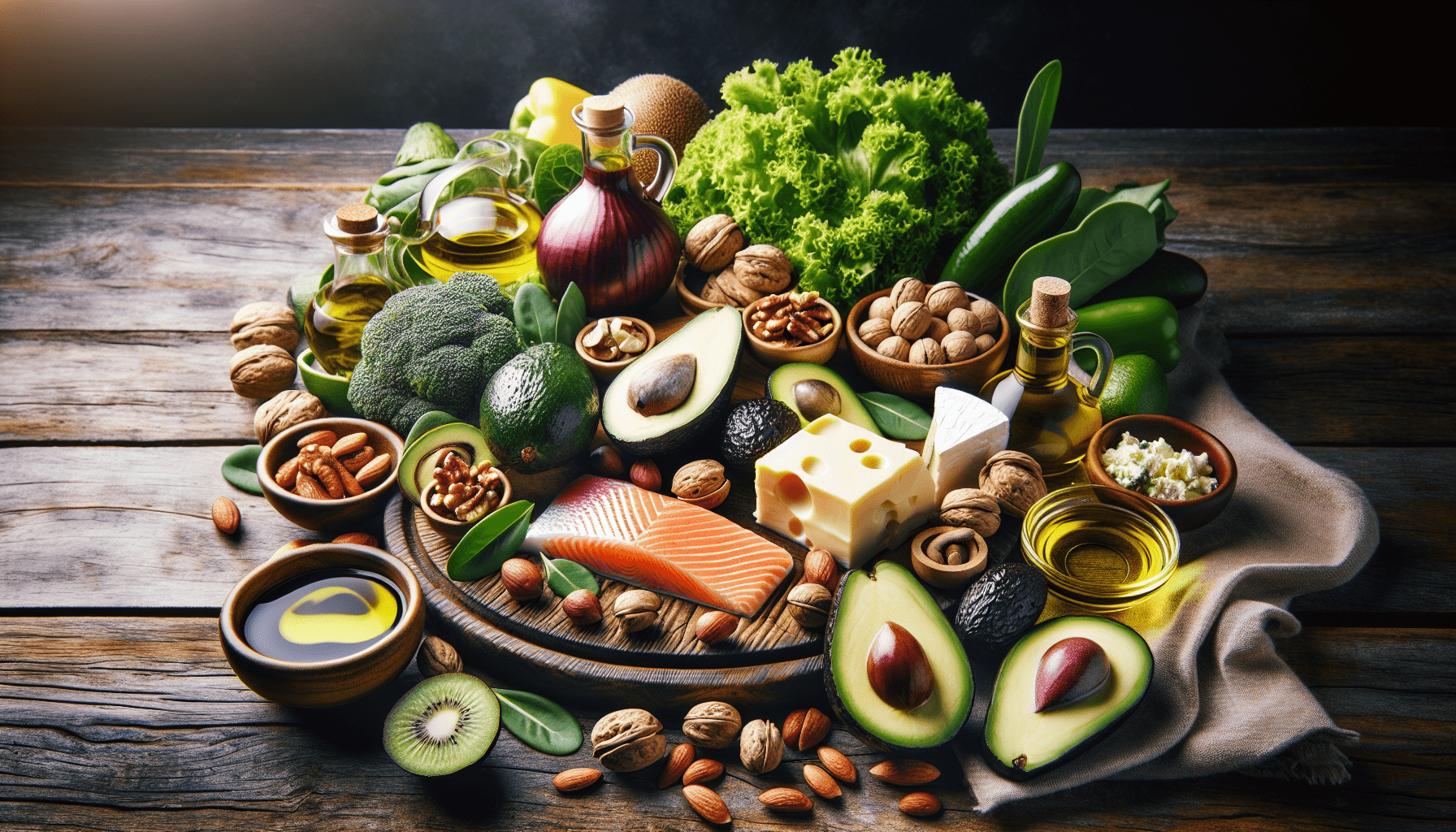Have you ever wondered how some people seem to lose weight effortlessly while enjoying foods you thought were off-limits? It might just be due to the keto diet. Let’s take a closer look at what the keto diet is and how it works, so you can determine if it’s a fit for your lifestyle.
Unlock the Secret to Rapid Weight Loss – Start Now!
What Is the Keto Diet?
The ketogenic diet, commonly known as the keto diet, is a low-carb, high-fat eating plan. It dramatically reduces carbohydrate intake while increasing fat consumption, putting your body into a metabolic state called ketosis. When in ketosis, your body becomes incredibly efficient at burning fat for energy.
The Basics of Ketosis
When you eat carbohydrates, your body converts them into glucose, which serves as its primary source of energy. However, when carbohydrate intake is drastically reduced, your body runs low on glucose. To compensate, it begins to convert fat into ketones—a type of fuel that can power your brain and other vital organs. This is ketosis in action!
Macronutrient Makeup
The typical macronutrient ratio on the keto diet is:
| Macronutrient | Percentage |
|---|---|
| Fats | 70-75% |
| Protein | 20-25% |
| Carbohydrates | 5-10% |
By adjusting your macronutrient intake to this ratio, you can push your body into that coveted state of ketosis.
Benefits of the Keto Diet
You may be wondering why the keto diet has garnered so much attention. Let’s break down some of its notable benefits:
Weight Loss
One of the most recognized benefits of the keto diet is weight loss. By shifting your body’s energy source from glucose to fat, you can enhance fat loss, particularly visceral fat that occupies the abdominal area. Additionally, a higher fat intake can help you feel fuller longer, potentially curbing hunger and reducing caloric intake overall.
Enhanced Mental Clarity
Many followers of the keto diet report experiencing improved mental clarity and focus. When your brain utilizes ketones instead of glucose, it can lead to a more stable energy level, preventing the brain fog often associated with traditional high-carb diets.
Increased Energy Levels
Initially, you might experience symptoms of the “keto flu” as your body adjusts to burning fat for fuel. However, once you’re in ketosis, many people find they have more sustained energy levels throughout the day—bypassing the energy crashes that can occur with high-carb diets.
Improved Blood Sugar Control
The keto diet can be beneficial for individuals looking to manage blood sugar levels. With lowered carbohydrate intake, blood sugar and insulin levels stabilise, which can be particularly advantageous for those with insulin resistance or type 2 diabetes.
Possible Benefits for Certain Medical Conditions
Beyond weight loss and general health, research suggests that the keto diet may have therapeutic benefits for certain medical conditions. It has been studied for its potential effectiveness in managing epilepsy, particularly in children who don’t respond well to traditional treatments.

How to Start the Keto Diet
If you decide to start the keto diet, it’s essential to approach it thoughtfully. Here’s a step-by-step guide to help you get started!
Step 1: Educate Yourself
Knowledge is power. Familiarize yourself with keto-friendly foods and avoid high-carb options. Understanding how to read labels and identify hidden sources of carbohydrates can dramatically impact your success.
Step 2: Meal Planning
Planning your meals in advance can help you stay on track. You can find plenty of keto meal plans online that outline meals and recipes. Consider creating a grocery list that focuses on healthy fats, protein, and low-carb vegetables.
Step 3: Track Your Macros
Using a food tracking app can assist you in maintaining the desired macronutrient ratios. Monitoring your intake helps ensure that you are truly following the keto guidelines and can advance you further into ketosis.
Step 4: Stay Hydrated
As you adjust your diet, maintaining proper hydration is crucial. The keto diet is known for causing water weight loss, so drink plenty of water to stay hydrated. Consider electrolyte supplementation, especially during the initial phase, to mitigate symptoms of the keto flu.
Step 5: Be Patient and Flexible
Your body needs time to adapt to this new way of eating. Avoid stressing over minor fluctuations in weight or carb intake. Nutrition is about balance and consistency; approach your new diet with flexibility.
Foods to Enjoy on the Keto Diet
Learning which foods to incorporate into your diet can simplify your meal planning. Here are some keto-friendly options:
Healthy Fats
- Avocado: Rich in nutrients and monounsaturated fats, avocados are versatile and satisfying.
- Olive Oil: Use it in dressings and for cooking to add a healthy fat source.
- Coconut Oil: This oil has a unique composition of medium-chain triglycerides (MCTs), which can support ketosis.
Protein Sources
- Meat: Choose unprocessed cuts of beef, pork, and poultry.
- Fish and Seafood: Fatty fish like salmon and sardines provide omega-3 fatty acids and protein.
- Eggs: This nutrient-dense food is a keto staple, offering protein and healthy fats.
Low-Carb Vegetables
- Leafy Greens: Spinach, kale, and lettuce are all excellent choices with minimal carbs.
- Cruciferous Vegetables: Broccoli, cauliflower, and Brussels sprouts are nutrient-packed and low in carbohydrates.
Nuts and Seeds
- Almonds: Full of healthy fats and fiber, they make for a great snack.
- Chia Seeds: They are high in fiber and can be added to smoothies or used to create keto-friendly puddings.
Dairy
- Cheese: High in fat and protein, cheese can fit seamlessly into your meals.
- Heavy Cream: Use it in coffee or recipes to add richness without carbs.

Foods to Avoid on the Keto Diet
To facilitate your journey into ketosis, it’s equally important to avoid certain foods. Here’s a list of what to steer clear of:
Sugary Foods
All forms of sugar are detrimental to your efforts to maintain low carbohydrate intake. This includes candies, desserts, and sweetened beverages.
Grains and Starches
Foods like bread, pasta, rice, and cereals should be limited or eliminated from your diet, as they can spike your carbohydrate intake.
High-Carb Vegetables
Certain vegetables, such as potatoes, corn, and carrots, contain higher amounts of carbohydrates and should be consumed sparingly.
Fruit
While some fruits can be enjoyed in moderation, most are high in sugars. Berries like strawberries and raspberries can be consumed but should be limited.
Processed Foods
Generally, processed foods contain unhealthy additives and hidden sugars. Stick to whole, unprocessed foods to support your health on the keto diet.
Potential Side Effects of the Keto Diet
While there are several benefits to the keto diet, you should also be aware of potential side effects. Not everyone experiences these symptoms, but being informed will help you better manage them.
Keto Flu
When transitioning to a state of ketosis, some individuals experience flu-like symptoms, often referred to as the “keto flu.” Symptoms can include headaches, fatigue, irritability, and muscle cramps. These generally subside within a week or two.
Digestive Issues
Some people may experience digestive changes, such as constipation or diarrhea, as their body adjusts to a new way of eating. To mitigate this, ensure you are consuming enough fiber from low-carb vegetable sources and stay well-hydrated.
Nutrient Deficiencies
Restricting carbohydrate intake may limit your consumption of certain nutrients. Consider incorporating a variety of low-carb vegetables and consulting with a healthcare professional to ensure you’re meeting your nutritional needs.
Changes in Cholesterol Levels
The keto diet often increases levels of LDL (bad) cholesterol in some individuals. It’s vital to have your cholesterol levels monitored if you choose to follow this diet, especially if you have a history of heart concerns.

Is the Keto Diet Right for You?
Determining whether the keto diet is a suitable choice for you involves evaluating several factors. Consider the following:
Your Goals
Clarify what you hope to achieve with your diet. Whether it’s weight loss, improved mental clarity, or better blood sugar control, your goals can guide your choice.
Your Lifestyle
Think about your lifestyle and how the keto diet would fit into it. Are you prepared to commit to meal planning and ingredient substitutes? Do you enjoy the types of food that the diet emphasizes?
Health Conditions
If you have existing health conditions, consulting with a healthcare professional or a registered dietitian before starting the keto diet is crucial. They can provide tailored guidance that aligns with your health needs.
Conclusion
Understanding the keto diet and how it works can empower you to make informed dietary choices. This eating plan’s shift towards high fats and low carbs can offer various benefits, from weight loss to better focus. However, it’s essential to be mindful of potential side effects and to ensure that it’s the right fit for your health and lifestyle.
If you’re considering this dietary approach, take the time to educate yourself, plan your meals, and pay attention to how your body responds. After all, successful dietary changes should be sustainable and improve your overall well-being. Whether you decide to give keto a try or opt for another path, the key is to find what works best for you and your happiness.
Unlock the Secret to Rapid Weight Loss – Start Now!
